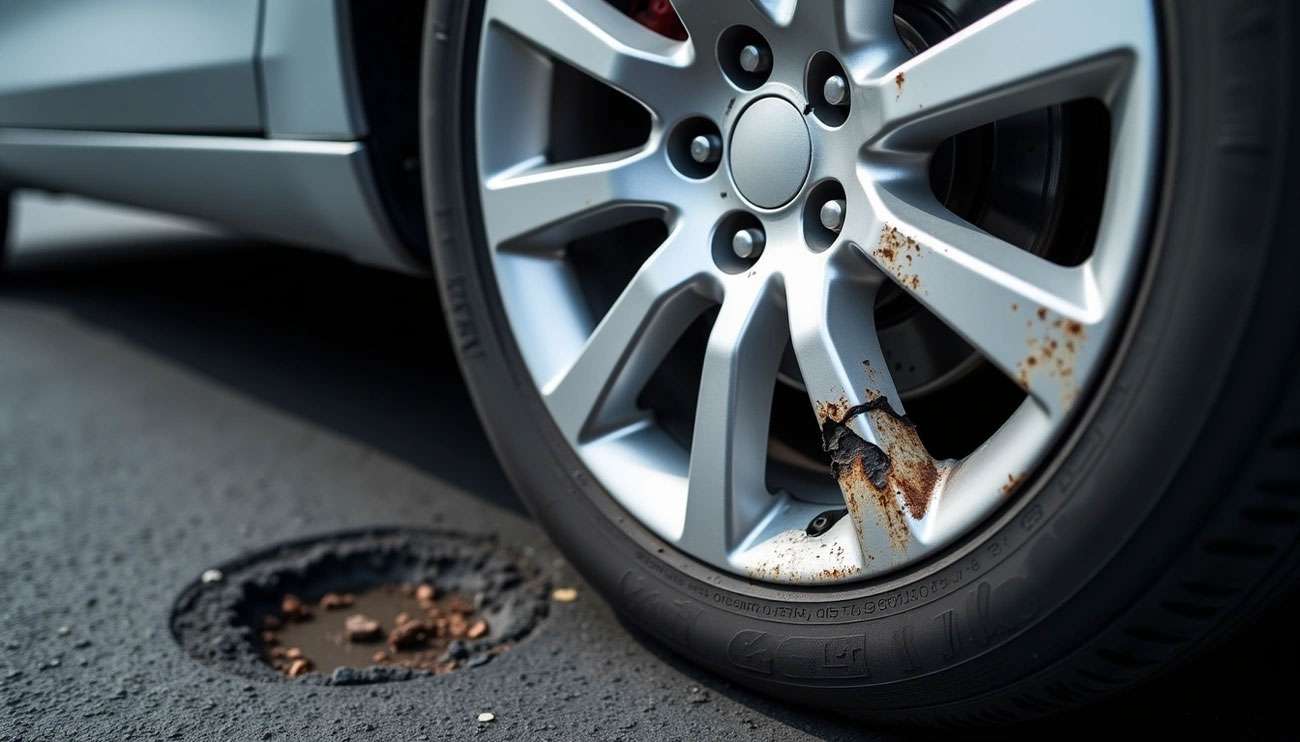
Wheel damage affects more drivers than you might expect. Potholes, tight parking spaces, and everyday driving conditions can compromise your wheels without warning. Even experienced drivers find themselves dealing with bent rims, curb rash, or cracked wheels that threaten both vehicle performance and safety.
The effects of rim damage go far beyond cosmetic concerns. Bent wheels create dangerous vibrations at highway speeds, while cracked wheels can cause sudden air leaks and tire failure. Curb rash from parking mishaps doesn't just look unsightly—it creates entry points for corrosion that can weaken your wheels over time. Driving on underinflated tires puts additional stress on rim edges, setting you up for expensive damage down the road.
At Performance Plus Tire, we've seen every type of wheel damage imaginable. Our experience working with thousands of custom wheels and aftermarket rims has taught us exactly what causes these problems and how to prevent them. We've identified nine specific damage types that account for the majority of wheel issues, along with proven strategies to protect your investment and keep you safe on the road.
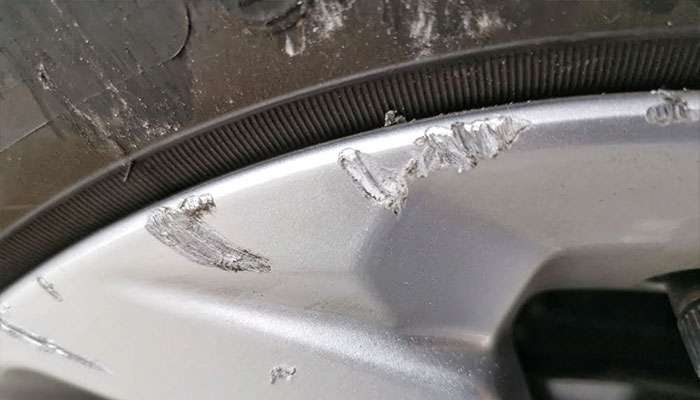
Image Source: Alloy Wheel Repair Specialists
That jarring impact when you hit a pothole does more than just rattle your teeth. Potholes develop when water penetrates asphalt cracks and freezes, expanding to create the road craters that plague drivers nationwide. The numbers tell the story—American drivers shell out approximately $3 billion annually on pothole-related repairs.
These road depressions pack a serious punch when it comes to vehicle damage. What looks like a minor inconvenience can cost you an average of $406 in repairs, making potholes one of the most expensive hazards you'll encounter on the road.
The damage extends well beyond your wheels. Pothole strikes can wreck your tires, suspension system, steering components, exhaust, and undercarriage. Deep potholes hit at speed can even require bumper replacement. The real danger comes when pothole damage leads to tire blowouts or suspension failure while driving—either can cause you to lose control entirely. Swerving suddenly to avoid potholes creates its own risks, potentially sending you into other lanes or oncoming traffic.
Understanding pothole mechanics helps explain why the damage can be so severe. The angle and speed of impact determine everything. Hit a pothole straight-on at highway speed, and you're looking at maximum force transfer to your wheels.
Here's what happens during impact: your tire gets compressed between the pothole's edge and the rim itself. This violent compression creates three main types of damage:
Bent rims: Impact force deforms aluminum or steel, preventing smooth rolling
Cracked rims: Severe impacts fracture the rim structure, creating safety hazards
Air leaks: Damaged rims can't maintain proper tire seal, causing pressure loss
Tire pressure plays a crucial role in damage severity. Properly inflated tires provide better cushioning against impacts, while underinflated tires increase rim damage risk and suspension problems. Overinflated tires offer less impact protection, potentially causing more suspension damage.
After hitting a pothole, inspect for these warning signs:
Tire problems: Look for sidewall bulges or cuts where the tire got pinched against the rim
Steering issues: Off-center steering wheels or vehicle pulling indicate alignment or steering component damage
Vibrations: Unusual shaking in the steering wheel, seat, or floorboard signals possible suspension damage
New noises: Rattling, clunking, or scraping sounds suggest bent or displaced components
Dashboard warning lights: Any illuminated indicators after pothole impact require immediate professional inspection
When you suspect pothole damage, find a safe place to pull over immediately. Check your tires visually for obvious damage or pressure loss. For alignment issues, bent rims, or hidden damage, get professional evaluation right away. What seems like minor damage now can become expensive repairs and safety hazards if you ignore the warning signs.

Image Source: AutoNation Mobile Service
Parking mistakes happen to every driver. Curb rash ranks among the most common types of rim damage we see at Performance Plus Tire, affecting everything from budget-friendly steel wheels to expensive custom alloys. Even skilled drivers occasionally misjudge distances during parallel parking, creating scratches and gouges that go beyond surface-level problems.
Curb rash develops when your wheel's rim makes contact with a curb, pothole edge, or similar hard surface. The resulting damage appears as scratches, scuffs, or deep gouges along the wheel's outer edge. While some curb rash looks purely cosmetic, the damage often penetrates deeper than the visible surface, affecting the wheel's protective coating and underlying material.
Most curb rash incidents occur during parking maneuvers. Parallel parking too close to curbs causes the majority of these problems. Tight parking spaces, poor visibility conditions, and driver distractions also contribute to curb contact. Winter driving conditions make the situation worse, as icy roads reduce vehicle control and make precise steering more difficult.
Curb rash creates more problems than just unsightly appearance. The scratches and gouges provide entry points for moisture, road salt, and other corrosive substances. Once these elements penetrate the wheel's protective finish, corrosion begins attacking the underlying metal. This process gradually weakens the wheel structure over time.
Structural damage from curb impacts poses real safety concerns. Severe curb damage can compromise wheel integrity to the point where the wheel may fail under normal driving stress. Sidewall damage to your tires from curb contact can cause sudden blowouts. Repeated curb strikes often damage suspension components, throw off wheel alignment, and even affect undercarriage parts like transmission mounts and tie rod ends.
The financial consequences extend beyond repair costs. Curb rash significantly hurts your vehicle's resale value. Luxury vehicles suffer particularly steep value drops from even minor wheel damage. When curb damage causes material loss or rim deformation, you'll feel steering wheel vibrations at highway speeds, requiring expensive correction.
Smart driving habits and the right equipment can eliminate most curb rash incidents:
Master parking techniques: Keep generous distance from curbs, especially during parallel parking. Angle your passenger-side mirror downward to monitor curb proximity more accurately. Take your time in tight spaces and don't hesitate to reposition if needed.
Install rim protectors: These sacrificial guards absorb impacts between your wheels and curbs. Choose from clip-on or adhesive styles that act as protective barriers for your rims. While they won't stop severe impacts, rim protectors handle minor contact that causes most curb rash.
Choose protective tires: Tires with wider sidewalls provide better curb protection than low-profile options. The additional rubber material offers more cushioning and reduces direct wheel-to-curb contact.
Use parking assistance technology: Parking sensors, backup cameras, and proximity alarms alert you before contact occurs. Some aftermarket systems include specialized curb detection that warns when you're getting too close.
Inspect wheels regularly: Check your wheels monthly for new damage. Early detection allows for affordable repairs before minor scratches become major structural problems.
When curb rash does occur, professional assessment determines whether you're dealing with cosmetic damage or structural issues. Minor scratches often respond well to repair, but deep gouges or bent rim sections typically require complete wheel replacement for safety reasons.
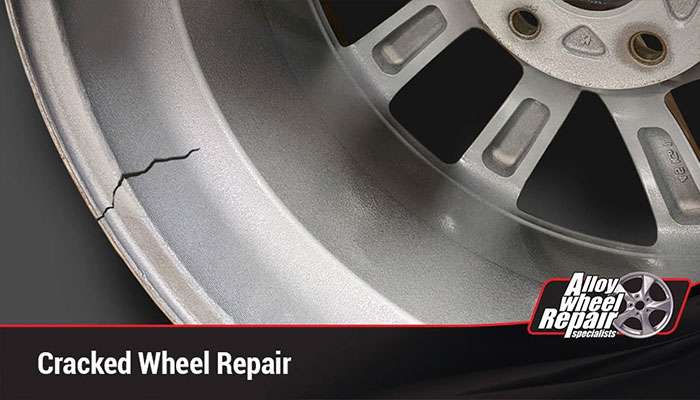
Image Source: Alloy Wheel Repair Specialists
Cracked wheels represent the most dangerous type of wheel damage you can encounter. Unlike bent rims or curb rash that develop gradually, wheel cracks often appear suddenly and can lead to catastrophic failure without warning. Even hairline fractures compromise your vehicle's safety, making early detection critical for road safety.
Impact damage stands as the leading cause of wheel cracks. Deep potholes create the most problems, as sudden impacts put tremendous stress on wheel structures, causing them to crack under strain. Sharp impacts from hitting curbs or off-road obstacles also increase your risk of developing dangerous wheel cracks.
Manufacturing defects create another serious vulnerability. Casting process imperfections can leave structural weaknesses in your wheels. Air pockets or material inclusions compromise wheel integrity, making them susceptible to cracking even during normal driving conditions.
Additional factors that contribute to wheel cracks include driving with flat or underinflated tires, which removes crucial cushioning between road surfaces and rims. Extreme temperature changes cause metal expansion and contraction, while excessive vehicle weight from cargo or modifications puts additional strain on wheel structures. Overtightened lug nuts create stress points that can initiate crack formation.
Driving on cracked wheels creates immediate safety hazards. Cracks compromise structural integrity, potentially leading to catastrophic wheel failure while driving. Minor cracks grow over time as weight is applied, eventually causing complete wheel failure.
Air leaks present another major concern. Cracks near the rim prevent proper tire sealing, causing pressure loss. This deflation affects handling and generates excessive heat that can lead to tire shredding and failure.
Cracked wheels affect your vehicle's overall performance through poor handling and reduced braking effectiveness. Uneven weight distribution stresses your suspension system, while vibrations indicate potential imminent failure.
Professional assessment is essential if you suspect wheel cracks. Minor cracks sometimes allow for repair, while larger or multiple cracks typically require complete wheel replacement.
Small cracks may be repairable through professional welding. Trained technicians use specialized welding techniques to seal cracks and restore wheel integrity. After welding, wheels undergo testing to ensure they meet safety standards before returning to service.
Not all cracks can be repaired safely. Deep cracks, cracks near the wheel center, or multiple fractures generally require replacement rather than repair. When cracks compromise wheel strength or occur in high-stress areas, replacement represents the only safe option.
At Performance Plus Tire, our expert technicians can properly assess crack damage and recommend appropriate repair or replacement options. Visit https://www.performanceplustire.com/ for professional wheel evaluation. Attempting DIY repairs on cracked wheels can be dangerous due to the specialized skills and equipment required.
Wheel repairs cost money, but considering the potential consequences of driving with compromised wheels—including accidents, further vehicle damage, and safety risks—professional inspection remains the smart choice.

Image Source: teslaunch
Bent rims top the list of wheel damage we see at Performance Plus Tire. While some bends look minor, they can cause serious performance problems that affect your safety and your wallet. Early detection makes all the difference between a simple repair and a complete wheel replacement.
Pothole strikes cause the majority of bent rim damage. The sudden impact creates enough force to deform even the strongest alloy wheels. Parking lot mishaps and curb collisions follow close behind, especially when you're maneuvering in tight spaces.
Your risk increases significantly under certain conditions:
Underinflated tires eliminate the protective cushion between your rims and road hazards
Low-profile tires offer less impact protection, leaving rims exposed to damage
Overloaded vehicles put extra stress on wheels that can cause bending from smaller impacts
Corroded rims lose structural strength and bend more easily when hit
Road hazards don't need to be massive to cause damage. Small obstacles hit at the wrong angle or speed can deform your wheel's outer edge.
Recognizing bent rim symptoms early prevents bigger problems down the road. Here's what to watch for:
Vibrations at highway speeds signal the most common bent rim problem. Steering wheel vibrations usually mean front wheel damage, while vibrations through your seat point to rear wheel issues.
Uneven tire wear patterns develop when bent rims prevent even tire contact with the road. This leads to premature tire replacement and poor traction when you need it most.
Pulling to one side while driving straight indicates alignment problems from rim damage. Bent rims can't roll smoothly, forcing your vehicle to work harder to stay straight.
Tire pressure loss that keeps coming back often points to a bent rim breaking the seal between tire and wheel. This problem gets worse over time and can lead to dangerous blowouts.
Smart driving habits prevent most bent rim damage:
Stay alert to road conditions and slow down for potholes when you can't avoid them. Reducing speed before impact dramatically reduces the force on your wheels.
Check tire pressure monthly and keep it at manufacturer specifications. Properly inflated tires absorb road impacts much better than underinflated ones.
Don't exceed your vehicle's weight limits. Extra weight makes rim damage more likely even from minor road hazards.
At Performance Plus Tire, our experienced technicians can evaluate bent rim damage and determine whether your wheels can be repaired or need replacement. Visit https://www.performanceplustire.com/ for professional assessment and repair options.
Bent rims create real safety issues beyond just ride comfort. They cause uneven tire wear, poor handling, and increase your risk of tire blowouts. Getting bent rims fixed quickly saves money and keeps you safe on the road.
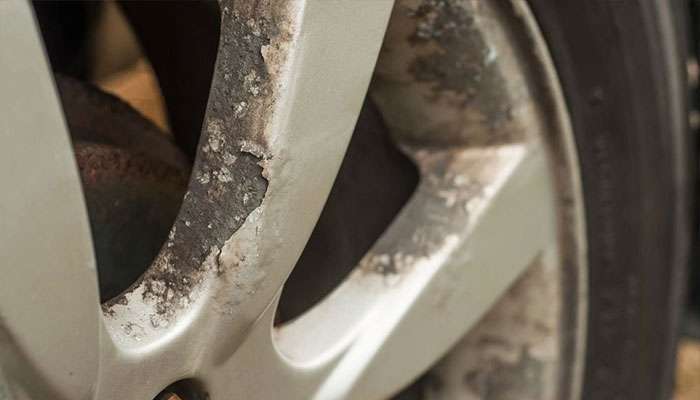
Image Source: Wheelership.com
Corrosion attacks your wheels quietly and relentlessly. While potholes and curbs cause immediate damage you can see and feel, corrosion works slowly over months and years, eating away at your wheels from the inside out. This makes it one of the most dangerous forms of wheel damage—by the time you notice the problem, structural integrity may already be compromised.
Moisture triggers the corrosion process that eventually destroys wheel material. Rain, puddles, and even high humidity start the oxidation reaction that leads to rust and deterioration. Winter weather creates the worst conditions, as moisture gets trapped on wheel surfaces for extended periods.
Road salt accelerates wheel destruction at an alarming rate. Salt's aggressive chemical properties attack both aluminum and steel wheels, with even high-quality alloy wheels eventually succumbing to salt-induced damage. If you live in an area where road salt is used regularly for snow and ice control, your wheels face constant chemical assault during winter months.
Brake dust accumulation creates another serious threat to wheel longevity. Every time you brake, iron-rich particles from your brake pads settle on your wheels. This metallic dust becomes sticky and corrosive when mixed with moisture, creating a grinding compound that eats through protective wheel finishes.
Additional corrosion causes include:
Scratches or chips in protective coatings that let moisture reach bare metal
Harsh wheel cleaners containing acids that strip away protective layers
UV exposure that breaks down clear coat finishes over time
Corrosion damage goes far deeper than surface appearance. The oxidation process creates pitting, cracking, and eventually holes in wheel material. These weak spots make your wheels susceptible to catastrophic failure under normal driving loads.
The seal between your tire and rim depends on smooth, intact surfaces. Corrosion disrupts this critical seal, causing persistent air leaks that can lead to dangerous pressure loss while driving. Severe corrosion can make tire mounting impossible, requiring expensive wheel replacement.
Corroded fasteners and lug nuts present serious safety hazards. When corrosion affects these critical components, wheel removal becomes difficult or impossible during emergencies. Worst case scenarios include wheel components failing completely during normal driving.
Regular cleaning stops corrosion before it starts. Use wheel cleaners specifically designed for your wheel type—never use household cleaners or acids that can damage protective finishes. Remove brake dust promptly before it has time to bond with wheel surfaces.
Protective coatings extend wheel life significantly:
Apply quality wheel wax or sealant every few months for ongoing protection
Consider clear coat restoration for wheels showing early oxidation signs
Professional powder coating provides maximum corrosion resistance for high-exposure situations
Address wheel damage immediately. Small scratches or chips in protective finishes become entry points for moisture and corrosive chemicals. Early repair costs much less than wheel replacement.
Winter driving requires extra attention. Wash your wheels frequently to remove road salt, paying special attention to areas where salt accumulates. Avoid driving through deep puddles where salt concentrations are highest.
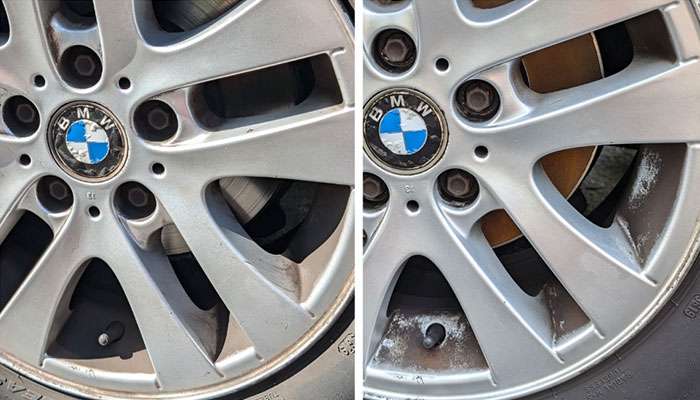
Image Source: Reddit
Brake dust affects every vehicle on the road. Each time you press the brakes, tiny metallic particles from your brake pads and rotors break away and settle on your wheels. While this seems like a normal part of driving, brake dust can cause serious damage if you don't address it regularly.
Brake dust consists of metallic particles from brake pads and iron fragments from brake rotors that detach during braking. These tiny particles become airborne then settle on your wheels. The heat generated during braking causes these particles to bond with your wheel's surface.
The real problem starts when brake dust sits on your wheels. These metallic particles are corrosive and will etch into your wheel's protective coating. Over time, this corrosive action penetrates through the clear coat finish down to the alloy itself. Once the protective layer is compromised, your wheel becomes vulnerable to further deterioration.
Alloy wheels face particular risk because the abrasive materials in brake dust scratch the surface, creating entry points for moisture and road chemicals. This damage becomes increasingly difficult to repair as the dust bakes onto the metal.
Look for these warning signs of brake dust damage:
Dark, stubborn film that regular soap cannot remove
Discolored tires near wheel areas
Streaked, permanently dirty-looking wheel surface even after washing
Rough texture or pitting on previously smooth wheel surfaces
Excessive brake dust on one wheel (possibly indicating stuck calipers)
Excess brake dust might signal underlying brake system problems. Sticking calipers or sliding pins can cause brake drag, resulting in abnormal dust accumulation.
Regular wheel cleaning represents your best defense against brake dust damage. Clean your wheels every 2-4 weeks, depending on your driving habits. Use pH-balanced wheel cleaners specifically formulated for your wheel type.
Rinse wheels thoroughly after cleaning to prevent cleaner residue from causing additional damage. Applying wheel sealant or ceramic coating creates a protective barrier that repels brake dust and simplifies future cleaning.
If you're dealing with excessive brake dust, consider switching to ceramic brake pads, which produce less visible dust than metallic or semi-metallic alternatives.
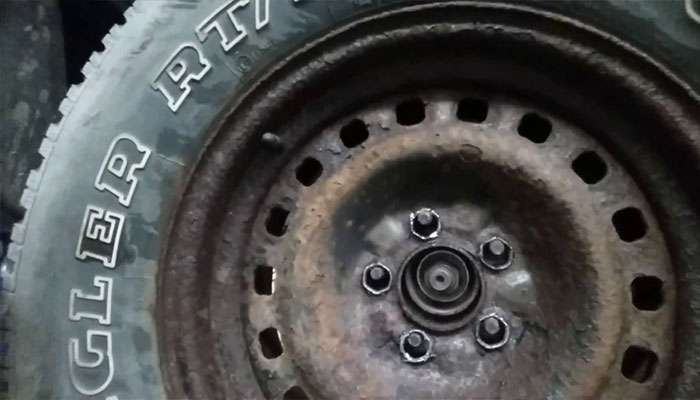
Image Source: YouTube
Many drivers believe tighter lug nuts mean safer wheels. This misconception causes some of the most preventable wheel damage we see. Proper torque specifications exist for good reason—exceeding them can ruin your wheels and create serious safety hazards.
Excessive torque creates destructive pressure that spreads throughout your wheel assembly. The rim bears the brunt of this stress, often warping in ways that permanently alter its balance and structural integrity.
The damage typically includes:
Cracking and warping of alloy wheels, compromising their structural strength
Thread stripping on lug nuts and wheel studs
Brake rotor distortion that affects stopping performance
Stretching or complete breakage of wheel studs
When overtightened wheel nuts become damaged, they can break completely when you hit bumps or potholes, potentially causing catastrophic wheel failure.
Early detection of overtightened lug nuts helps prevent serious wheel problems. Look for these warning signs:
Deformed or stretched studs indicate torque above manufacturer specifications. You might notice wheel wobbling while driving or find it extremely difficult to remove wheels during tire changes. If lug nuts keep loosening despite repeated tightening, stretched studs could be the problem.
Alloy wheels show damage more easily than steel wheels, with visible distortion around the lug nut seats. For wheels with aluminum dress caps, these caps may distort and spin freely when overtightened.
Using a calibrated torque wrench remains the only reliable way to avoid overtightening. Set the wrench to your vehicle's recommended specification—typically between 110-120 N⋅m depending on your vehicle. Tighten lug nuts in a star pattern to distribute pressure evenly.
Never rely on impact guns for final tightening since these tools apply unpredictable amounts of torque. After any wheel service, recheck torque after 50-100 miles once the nuts have settled into position.
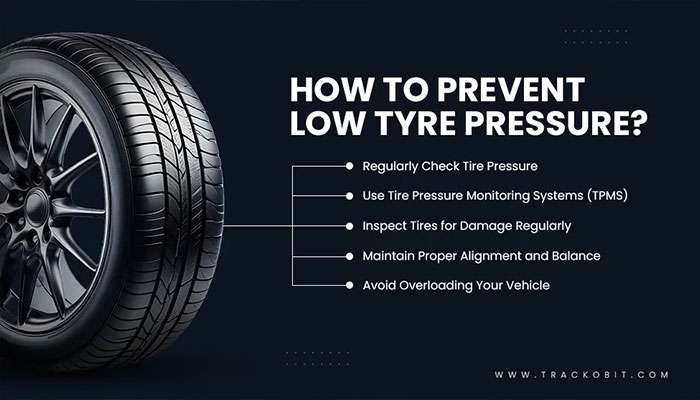
Image Source: White Label GPS Tracking Software
Proper tire pressure protects your wheels from damage that happens slowly and silently. While potholes and curbs cause obvious, immediate damage, underinflated tires gradually destroy your rims through everyday driving.
When your tires don't have enough air, they put dangerous stress on your rim edges. The tire flexes excessively, generating heat through constant sidewall movement. This excessive flexing eliminates the cushioning effect that normally protects your wheels from road hazards. Even small bumps and road irregularities can bend or crack your rims when your tires are underinflated. Your rim edges take the brunt of these impacts, often resulting in permanent damage that affects wheel balance and safety.
A quality tire pressure gauge is essential for protecting your wheels. Digital or dial gauges give you more accurate readings than the ones you'll find at most gas stations. Check your tire pressure at least once a month and always before long trips. Keep in mind that tires lose about 1.45 psi every month under normal conditions. For the most accurate reading, check your pressure when the tires are cold—meaning you haven't driven for at least three hours.
Your vehicle's correct tire pressure is listed on a placard inside the driver's door jamb or in your owner's manual. Never use the maximum pressure number printed on the tire sidewall. Temperature changes affect tire pressure significantly—expect to lose 1-2 psi for every 10-degree drop in temperature. Don't rely solely on your TPMS warning light, which only activates when pressure drops 25% below the recommended level. By that point, your wheels are already at risk for damage.
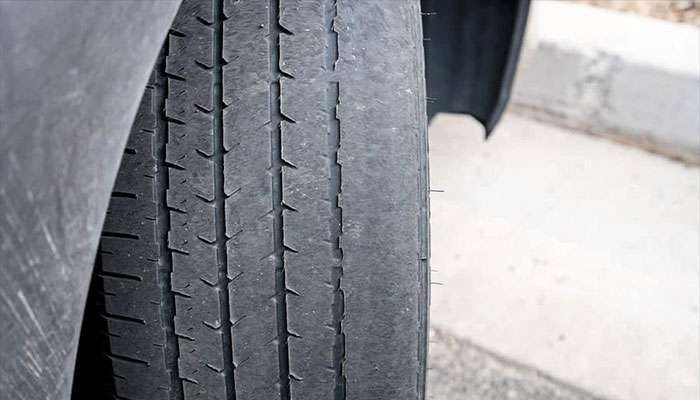
Image Source: BreakerLink
Wheel alignment problems creep up on drivers without warning. Even small alignment issues—as little as a fraction of an inch—can cause serious damage to your wheels and suspension components over time.
When your wheels aren't properly aligned, they create uneven forces throughout your vehicle's suspension system. Ball joints, tie rods, and control arms experience stress they weren't designed to handle. These components are built to work within specific tolerances, and misalignment pushes them beyond their limits.
Your tires show the first signs of alignment problems. Look for these specific wear patterns:
Feathering: One edge of the tread feels smooth while the other feels sharp—usually caused by incorrect toe settings
Camber wear: The inside or outside edge of the tire wears much faster than the center
Heel/toe wear: Tread blocks wear unevenly around the tire's circumference
Recognizing alignment problems early saves you money and prevents dangerous situations. Watch for these warning signs:
Your vehicle drifts to one side on straight roads
The steering wheel sits crooked even when driving straight
You feel vibrations through the steering wheel at highway speeds
Tires squeal during normal turns
Rapid or uneven tire wear patterns develop
Professional alignment checks should happen every 6,000 to 10,000 miles, or at least once a year. Get your alignment checked immediately after hitting major potholes, curbs, or being involved in any collision.
Keep unnecessary weight out of your vehicle, especially heavy items in the trunk that can affect alignment readings. Proper tire pressure also plays a crucial role—underinflated tires can throw off alignment measurements and vehicle performance.
Regular alignment maintenance protects your investment in custom wheels and ensures optimal handling performance from your vehicle.
Understanding the different types of wheel damage helps you identify problems early and take appropriate action. Our comparison guide breaks down the most common issues, their causes, and what to watch for.
| Damage Type | Primary Causes | Warning Signs/Symptoms | Prevention Methods | Safety Implications |
|---|---|---|---|---|
| Pothole Damage | Impact with road depressions, freezing/thawing cycles | Tire bulges/cuts, steering issues, vibrations, unusual noises, warning lights | Drive cautiously, maintain proper tire pressure, avoid potholes when possible | Can cause loss of vehicle control, blown tires, suspension damage |
| Curb Rash | Parking mishaps, parallel parking errors, tight maneuvers | Scratches/scuffs on rim edges, corrosion entry points | Use rim protectors, practice careful parking, utilize parking sensors, tilt mirrors | Can lead to structural compromise, moisture penetration, reduced resale value |
| Cracked Wheels | Impact damage, manufacturing defects, extreme temperature changes | Air leaks, poor handling, vibrations | Maintain proper tire pressure, avoid overloading, proper lug nut torque | Risk of catastrophic wheel failure, tire pressure loss, compromised handling |
| Bent Rims | Pothole impacts, curb collisions, driving with underinflated tires | Vibrations, uneven tire wear, steering problems, tire pressure loss | Drive defensively, maintain proper tire pressure, respect vehicle weight limits | Affects handling, causes uneven tire wear, increases blowout risk |
| Corrosion/Rust | Moisture exposure, road salt, brake dust accumulation | Abrasions, cracks, holes, air seal breaks | Regular cleaning, protective coatings, prompt damage repair | Compromises structural strength, affects air seal, degrades handling |
| Brake Dust Buildup | Normal brake pad/rotor wear, heat from braking | Dark stubborn film, discolored tires, rough texture, pitting | Regular cleaning (2-4 weeks), pH-balanced cleaners, wheel sealant | Can lead to corrosion, etching through protective coating |
| Overtightened Lug Nuts | Excessive torque application | Wheel wobbling, visible distortion, difficulty removing wheels | Use calibrated torque wrench, follow proper torque specs, avoid impact guns | Risk of stud breakage, wheel separation, compromised structural integrity |
| Low Tire Pressure | Natural pressure loss, temperature changes | Excessive rim edge strain, heat buildup | Monthly pressure checks, follow manufacturer specs, check when cold | Increases risk of rim damage, reduces impact protection |
| Improper Alignment | Suspension wear, impact damage | Vehicle pulling, crooked steering wheel, uneven tire wear | Regular alignment checks (6-10K miles), proper weight distribution | Accelerated component wear, compromised handling, tire damage |
This reference guide helps you quickly identify potential wheel problems and understand their severity. When in doubt about any wheel damage, professional assessment ensures your safety and prevents costly repairs down the road.
Protecting your wheels requires more than just regular washing—it demands understanding the real threats that can compromise your safety and drain your wallet. The nine damage types we've covered represent the most frequent issues we encounter at Performance Plus Tire, from sudden pothole impacts to gradual corrosion that silently weakens wheel integrity.
Your best strategy combines simple preventive habits with smart driving choices. Monthly tire pressure checks, proper torque specifications for lug nuts, and defensive driving around road hazards can eliminate most wheel damage before it occurs. Regular cleaning prevents brake dust corrosion, while scheduled alignment checks keep your tires wearing evenly and your vehicle handling properly.
Watch for warning signs that signal trouble ahead. Steering vibrations, uneven tire wear patterns, and visible wheel damage need immediate professional attention. Small problems quickly become expensive repairs—and dangerous situations—when ignored. For expert assessment of wheel damage and professional repair services, visit https://www.performanceplustire.com/ where our experienced technicians can determine the best solution for your specific situation.
Wheel problems rarely stay isolated. What starts as minor curb rash can lead to corrosion, air leaks, and eventually structural failure. Even cosmetic damage often indicates deeper issues that affect vehicle safety. Your wheels are your only contact with the road, making their condition critical for safe driving.
The knowledge you've gained here puts you ahead of most drivers who only react to wheel problems after they occur. Proactive maintenance, careful driving habits, and prompt attention to warning signs will keep your wheels performing reliably for years to come.
Understanding and preventing wheel damage protects your safety, saves money, and maintains your vehicle's performance and value.
• Maintain proper tire pressure monthly - Underinflated tires remove crucial cushioning, making rims vulnerable to bending and cracking from road impacts.
• Drive defensively around potholes and curbs - These common hazards cause the majority of wheel damage, from bent rims to dangerous cracks requiring immediate replacement.
• Use calibrated torque wrenches for lug nuts - Overtightening can crack wheels and strip threads, while proper torque prevents structural damage and ensures safe wheel attachment.
• Clean wheels regularly to prevent corrosion - Brake dust and road salt gradually eat through protective coatings, compromising wheel integrity and creating air leaks.
• Address wheel damage immediately - Minor issues like vibrations or uneven tire wear often signal serious problems that can lead to catastrophic failure if ignored.
Early detection and proper maintenance habits are your best defense against the nine most common wheel damage issues. Regular inspections, proper tire pressure, and professional alignment checks every 6,000-10,000 miles can prevent most wheel problems before they become safety hazards or expensive repairs.
The most frequent cause of wheel damage is impact-related incidents, such as hitting potholes or curbs. These collisions can lead to bent rims, cracks, and other structural issues that compromise wheel integrity and vehicle safety.
To prevent curb rash, practice careful parking techniques, especially during parallel parking. Consider using rim protectors, tilting your passenger-side mirror downward when parking, and utilizing parking sensors or cameras if available. Additionally, choosing tires with slightly wider sidewalls can provide extra protection against minor curb impacts.
Maintaining proper tire pressure is crucial for wheel health as it provides the necessary cushioning between the road and your rims. Underinflated tires increase the risk of rim damage during impacts, while overinflated tires reduce the tire's ability to absorb shocks. Regular pressure checks help prevent unnecessary stress on your wheels and improve overall vehicle safety.
It's recommended to have your wheel alignment checked every 6,000 to 10,000 miles or at least annually. However, you should also have it checked immediately after hitting significant potholes, curbs, or following any collision. Proper alignment prevents uneven tire wear and reduces stress on your wheels and suspension components.
Signs of potential wheel damage include vibrations while driving, especially at higher speeds, uneven tire wear patterns, steering problems such as pulling to one side, persistent tire pressure loss, and visible damage like cracks, bends, or corrosion on the wheel surface. If you notice any of these symptoms, it's important to have your wheels professionally inspected as soon as possible.